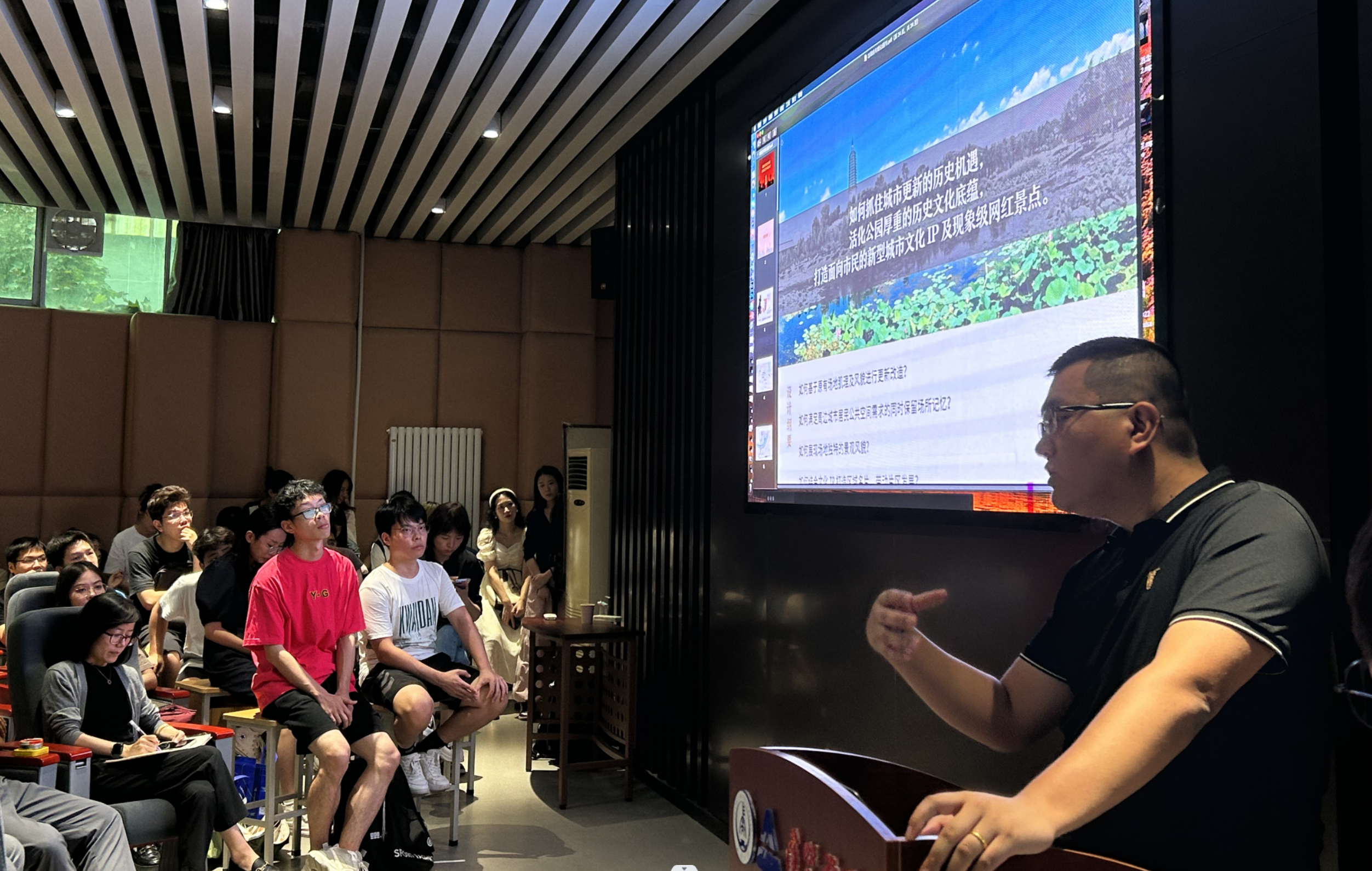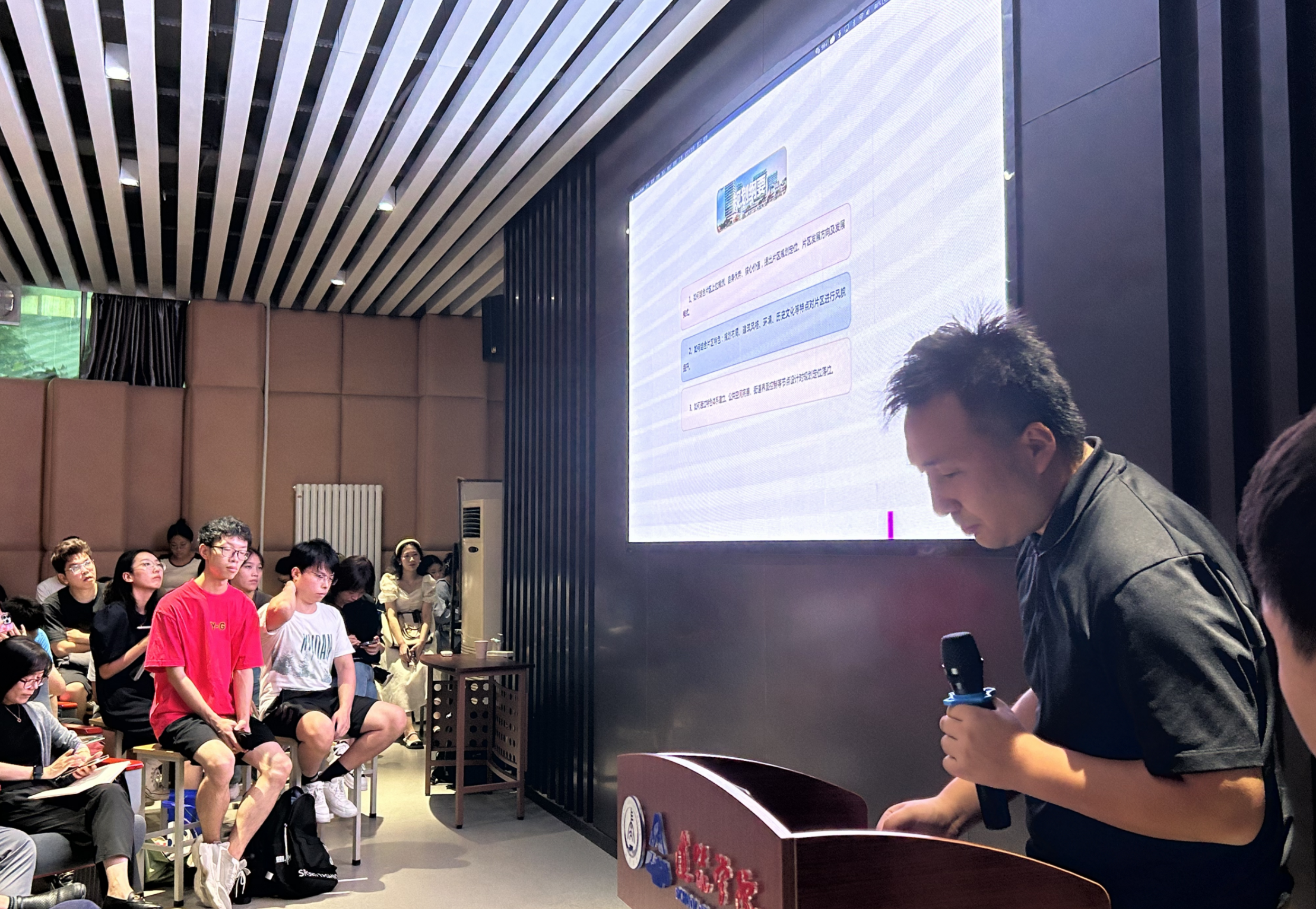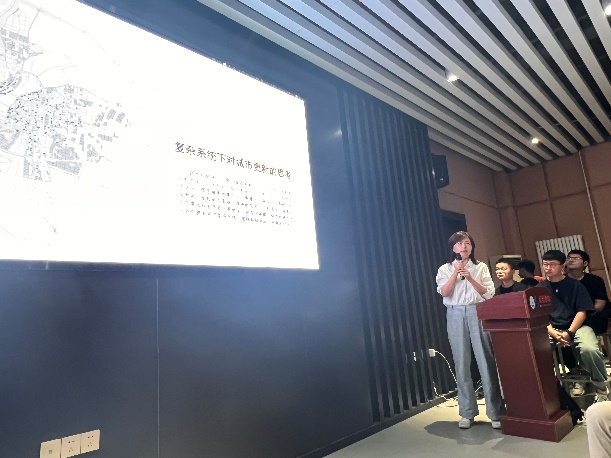Facing new issues, challenges, and opportunities in the training of architecture talents under the new circumstances, the School of Architecture has undertaken a series of reforms in recent years for courses related to design and creative research in architectural disciplines. The reforms mainly involve collaboration with the graduate joint training workstation of Chang'an University, implementing practical exercises based on real-world scenarios. The aim is to cultivate the engineering practical capabilities of graduate students and expand the practical path of "Three Comprehensive Education."
On the 14th of September 2023, at 6:00 PM, a joint university-enterprise design course, focusing on urban renewal, was successfully launched. The initiative was spearheaded by the School of Architecture at Chang'an University, with collaborative participation from China Northwest Design Institute. The opening ceremony took place at the lecture hall of the School of Architecture at Chang'an University. Five instructors from the School of Architecture, including Bai Hua, Zhang Jianxin, Liu Wei, Duan Yaqiong, Zhou Jizhe, along with over 100 graduate students, and four distinguished designers from China Northwest Design Institute - Li Ping, Chief Engineer of the Planning, Landscape, and Architectural Decoration Design Research Institute; Gong Deqiang, Director of the Landscape Institute; Qiao Yang, Director of the Planning Institute; and Hui Yusen, Deputy Director of the Landscape Institute - jointly participated in the kickoff event.
The collaborative activity involved the collective efforts of all teachers and students from the 2023 graduate courses "Architecture and Urban Design I," "Urban and Rural Planning and Design Research I," and "Landscape Planning and Design Creative Research I." The meeting was chaired by Bai Hua, Vice Dean of the School of Architecture, who briefly introduced the "joint training" collaboration model between the School of Architecture at Chang'an University and China Northwest Design Institute. The tasks and schedule for the three crucial stages of the joint design course - opening, mid-term assessment, and final defense - were outlined. Students were encouraged to cherish the opportunity of this university-enterprise joint design and strive for fruitful outcomes.

Vice Dean Bai Hua of the School of Architecture presided over the opening ceremony
Firstly, Deputy Director Hui Yusen from the Landscape Institute introduced the course design tasks for students majoring in architecture and landscape architecture. He provided a detailed analysis of the regional characteristics and historical background of the Huan Gu District's Huilong Temple area in Shenyang City. Elements such as the history and evolution of the site and its surroundings, the road system, and cultural heritage were discussed. Four design requirements were presented to the students: (1) How to conduct urban renewal while preserving the original site texture? (2) How to reflect the demands of residents during the urban renewal process? (3) How to unify the control of diverse landscape elements? (4) How to create the Tower Bay intellectual property (IP) and drive regional development?
Subsequently, Director Gong Deqiang from the Landscape Institute explained the course design background and site overview for urban and rural planning students. Director Gong provided a detailed introduction and presentation of the Xianyang West Gate area from various perspectives, including development background, regional positioning, industrial analysis, and transportation advantages. He proposed three design requirements for the students: (1) How to combine the upper-level planning of the area, its inherent advantages, and core values to propose development directions and models? (2) How to enhance regional characteristics based on the area's features? (3) How to implement planning positioning through a characteristic system, public spaces, street interfaces, and other nodal designs?

Deputy Director Hui Yusen from the Landscape Institute explains the design topics for the Huilong Temple area in Shenyang

Director Gong Deqiang from the Landscape Institute explains the design topics for the Xianyang West Gate area
The opening ceremony of the joint course was complemented by three insightful academic presentations, aimed at expanding students' design perspectives. Director Qiao Yang from the Planning Institute shared insights on the "Planning for the Renovation and Preservation of the Old City in Jincheng" and the "Planning for the Jingwei New City Automotive Industry Innovation Zone." Chief Engineer Li Ping, with the theme "Reflections on Urban Renewal under Complex Systems," presented excellent case studies such as the "Suzhou High-Speed Rail New City CNC Center Design," "Taiping Mountain Central Park Tourism Planning and Remediation," and the "Renovation of Courtyard No. 10 at Peach Blossom Wharf Fifty Miles from Beijing." Finally, Director Gong Deqiang, under the theme "The Ultimate Ideal of a Designer Without Talent," shared insights into his learning and growth process and his understanding of project design.

Designers provided an engaging academic presentation for students and faculty
In the lively Q&A session, students enthusiastically raised questions, and the experts and teachers provided thoughtful answers. In the concluding remarks of the Q&A session, Professor Zhang Jianxin encouraged students to develop "empathy" and listen to the demands of different groups. He emphasized the importance of fully exploring site resources and earnestly conducting the joint course design. With that, the opening ceremony of the joint course for the 2023 graduate students concluded in a spirited atmosphere of exchange.


